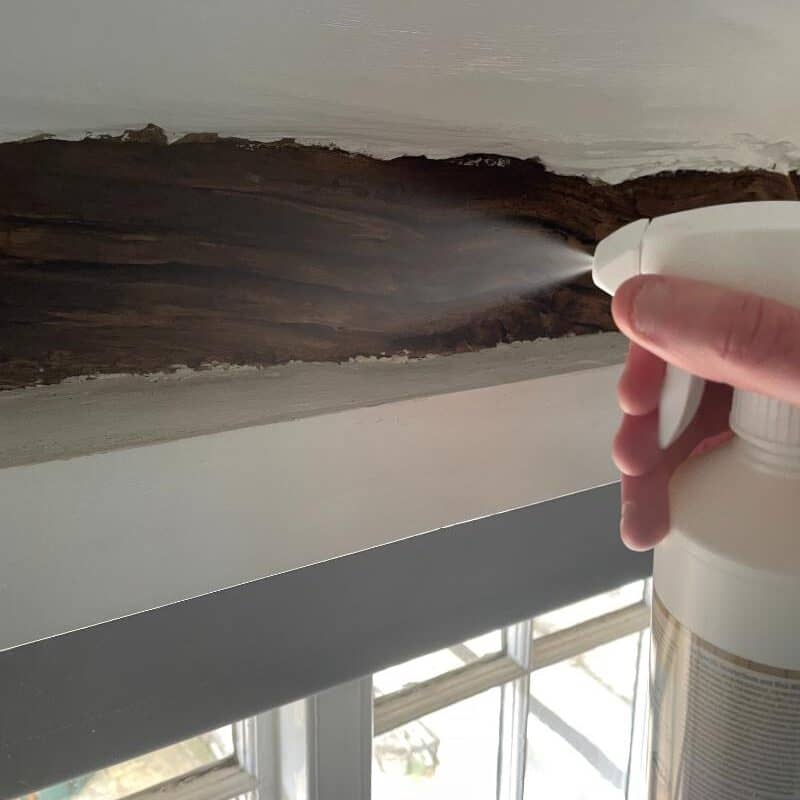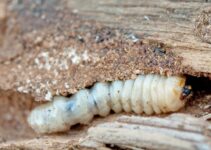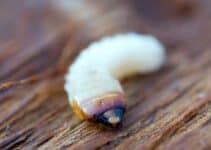Confronting the challenge of a woodworm infestation in cherished wooden items or structural timbers, I often get asked: “can you spray woodworm effectively?” The short answer is yes, you absolutely can. Through my extensive experience in tackling these resilient pests, I can verify that a specifically formulated woodworm treatment spray is both a substantive and successful approach to eradicate woodworm issues. Employing a professional-grade spray for woodworm, like the acclaimed Barrettine Premier Woodworm Killer Spray, has shown significant results in not just killing the wood-boring insects but also providing a protective barrier to stop future invasions.

Understanding how to spray woodworm necessitates the recognition of signs pointing towards an active woodworm presence. These signs include small, round holes in wooden surfaces and the sight of frass, which resembles fine sawdust, suggesting larvae are wreaking havoc within the timber. A woodworm spray treatment like Barrettine’s product, which I personally use for various applications, successfully addresses these infestations and is ideal for safeguarding furniture, beams, and more, preserving the integrity and appearance of the wood.
While the effectiveness of such treatments is undisputed, caution is paramount when spraying in environments like kitchen areas or where food is prepared. Adhering strictly to the manufacturer’s directions means the application not only serves its purpose but maintains a safe space for occupants. In my experience, typically a couple of applications will suffice, each followed by the recommended drying time, ensuring a thorough treatment that forestalls further woodworm dilemmas.
What Spray Kills Woodworm?
When confronting the pervasive threat of woodworm, identifying the best woodworm spray can be a daunting task for homeowners and DIY enthusiasts alike. A deep dive into the efficacy of various products reveals that Permethrin-enriched solutions often emerge as front-runners due to their proven track record in eradicating these pests effectively.
Within the impressive arsenal available for targeting woodworm, two names consistently rise to the forefront. Both the Barrettine Premier Woodworm Killer and Cuprinol Woodworm Killer (WB) have cemented their places as industry staples. Their comprehensive approach ensures they cover a spectrum of common culprits, from the insidious Common Furniture Beetle to the formidable House Longhorn Beetle, and including the Powder Post Beetle.
Beyond merely addressing woodworm, these treatments provide indispensable benefits for safeguarding woodworm spray for furniture. When applied, they necessitate a thorough drying period, up to 48 hours, before additional layers or finishes can be introduced, thus creating a formidable barrier against future invasions.
Any enthusiast inclined towards a DIY woodworm spray concoction must heed the professional advice—thorough research and adherence to safety protocols are imperative. Ready-made solutions often trump homemade alternatives in terms of convenience and effectiveness.
| Product Name | Active Ingredient | Target Species | Drying Time |
|---|---|---|---|
| Barrettine Premier Woodworm Killer | Permethrin | Common Furniture Beetle, House Longhorn Beetle, Powder Post Beetle | 48 hours |
| Cuprinol Woodworm Killer (WB) | Permethrin | Common Furniture Beetle, House Longhorn Beetle, Powder Post Beetle, Wood boring Weevils | 48 hours |
One must not overlook the significance of choosing a product with optimal penetration that fortifies wood against future threats. Vigilance in application, following the manufacturer’s guidance, and ensuring a properly ventilated space can yield remarkable results in the battle against woodworm.
Understanding Woodworm Spray
When it comes to safeguarding our cherished wooden possessions and structural timbers, effective woodworm spray treatments are vital. The battle against these voracious pests is led by permethrin woodworm treatment options which have proven to be highly efficacious in eradicating the larvae responsible for wood damage.
Permethrin-Based Sprays: The Standard in Woodworm Control
I’ve discovered that one of the standout products in this category is Barrettine woodworm spray. As a permethrin-based product, its formula is designed to not only tackle the existing population of wood-boring beetles but also provides a robust preventive measure against future attacks. What’s especially appreciated is its low-odor profile and clear finish after drying, which makes it a convenient choice for residential treatments. These aspects are crucial for maintaining a pleasant environment post-application.
In my professional assessment, ensuring the maximum effectiveness of a permethrin woodworm treatment involves more than just application; it necessitates adherence to recommended safety guidelines, such as ventilating the treated space well. Here’s a deeper look into some of the essential characteristics and recommendations for using Barrettine’s solution:
| Characteristic | Benefit | Application Advice |
|---|---|---|
| Permethrin-based formula | Highly effective at eradicating larvae and eggs | Apply according to label, typically two coats needed |
| Low odor | Comfortable for indoor use, no strong chemical smell | Ensure good ventilation during and after application |
| Clear drying | Does not alter wood appearance, maintains aesthetics | Allow 48 hours before overcoating or finishing |
| Preventive action | Protects treated wood from future infestations | Regularly inspect wood for signs of re-infestation |
Following these guidelines, I assure you that by using Barrettine woodworm spray, you’re not just dealing with the symptoms but also solidifying your wood’s defenses against potential future infestations.
Conclusion
In the relentless battle against wood-boring insects, my journey with effective woodworm spray, specifically Barrettine Premier Woodworm Killer, reveals a path to safeguarding our cherished wooden structures and artifacts. Vigilance and deliberation in the application of safe woodworm treatments are cardinal in ensuring the integrity and longevity of timber within our homes and historical edifices. My experience underscores the paramount importance of adhering to recommended safety protocols and the manufacturer’s guidance to achieve optimal efficacy and safety during woodworm treatment endeavors.
Best Practices for Spraying Woodworm
Prudence dictates that I commence with the donning of protective clothing and a respirator mask prior to the dispensation of any woodworm preventive solutions. Such measures are incumbent to mitigate the inhalation of spray mist or the absorption of chemicals through the skin. Once the treatment is applied, a period of no less than 48 hours is essential for the product to dry comprehensively before proceeding with subsequent finishing coats. My diligence in following these instructions assures me that the active larvae are eradicated and the potential for further damage is decisively mitigated.
In the aftermath of treatment, my commitment to woodworm prevention does not wane. The application of a protective timber coating is imperative to deter future infestations. My routine inspections for the tell-tale signs of new woodworm activity, such as fresh frass or newly-formed exit holes, are instrumental in detecting the resurgence of these insidious pests. By implementing these best practices, I am equipped to not only confront the existing infestation but also establish a resilient defense against the incursion of woodworm in the future.


